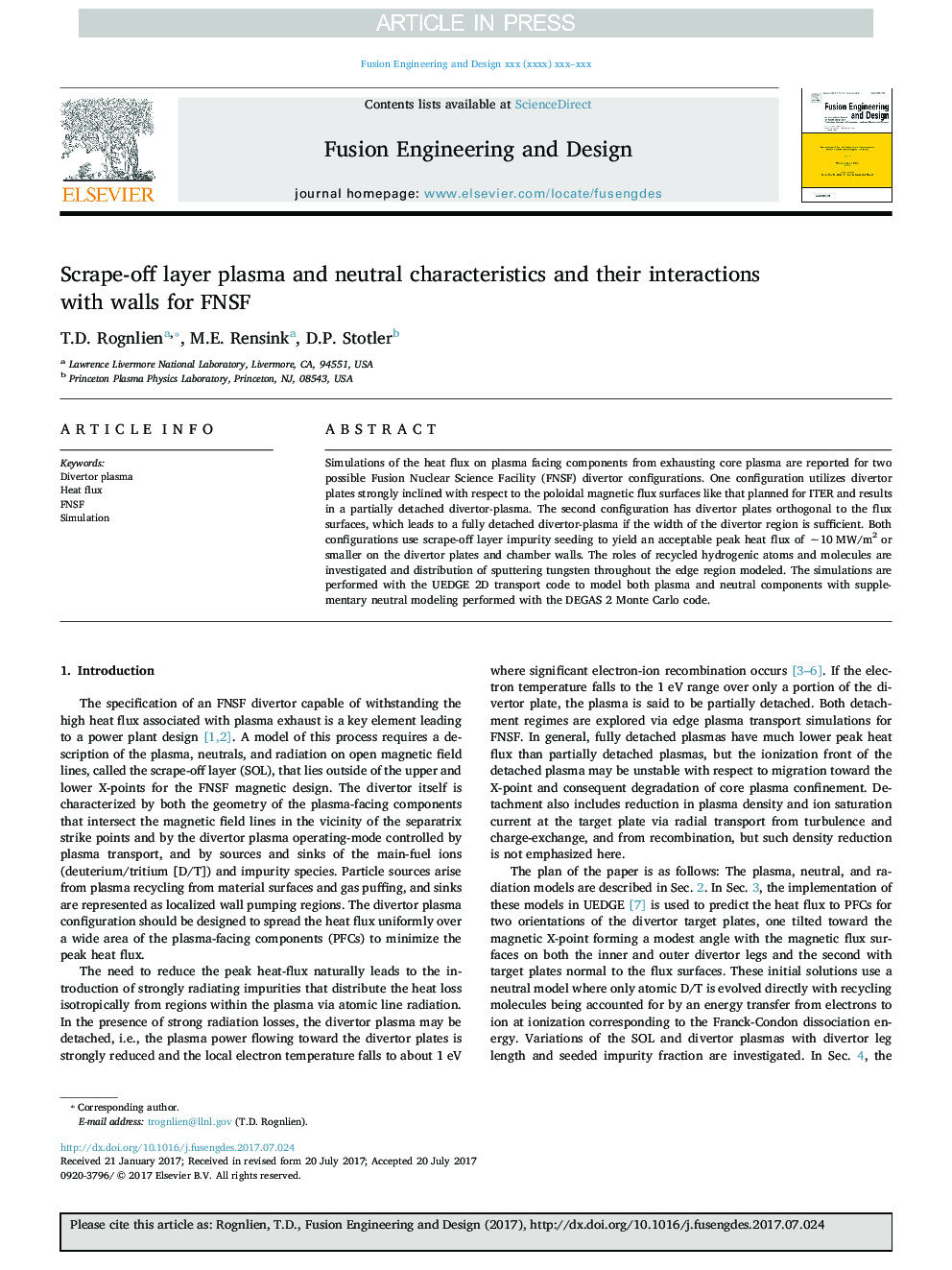| Article ID | Journal | Published Year | Pages | File Type |
|---|---|---|---|---|
| 10225362 | Fusion Engineering and Design | 2018 | 14 Pages |
Abstract
Simulations of the heat flux on plasma facing components from exhausting core plasma are reported for two possible Fusion Nuclear Science Facility (FNSF) divertor configurations. One configuration utilizes divertor plates strongly inclined with respect to the poloidal magnetic flux surfaces like that planned for ITER and results in a partially detached divertor-plasma. The second configuration has divertor plates orthogonal to the flux surfaces, which leads to a fully detached divertor-plasma if the width of the divertor region is sufficient. Both configurations use scrape-off layer impurity seeding to yield an acceptable peak heat flux of â¼10Â MW/m2 or smaller on the divertor plates and chamber walls. The roles of recycled hydrogenic atoms and molecules are investigated and distribution of sputtering tungsten throughout the edge region modeled. The simulations are performed with the UEDGE 2D transport code to model both plasma and neutral components with supplementary neutral modeling performed with the DEGAS 2 Monte Carlo code.
Keywords
Related Topics
Physical Sciences and Engineering
Energy
Energy Engineering and Power Technology
Authors
T.D. Rognlien, M.E. Rensink, D.P. Stotler,
